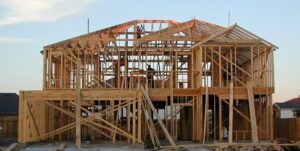 By Dick Hall-Sizemore
By Dick Hall-Sizemore
One of the explanations for the increase in the cost of new housing recently has been the surge in the costs of raw materials. Builders have been forced to pass those increased costs on to buyers.
Indeed, prices of materials, such as lumber, did increase significantly this last year, reaching a high during the spring. However, with supply chains opening up after the pandemic has eased, those lumber prices have decreased by about two-thirds. According to the theory, then, builders would be passing those savings on to buyers in the from of lower prices.
But, that does not seem to be the case. According to a Wall Street Journal article (yes, I know it will surprise some of you that I subscribe to the WSJ), builders are opting to keep prices where they are, thereby increasing their profit margins.
One interesting development discussed in the article is the effect on the building of multi-family facilities Because they have to buy lumber by the train carload, many builders of multi-family units put their plans on hold during the pandemic. Now that lumber prices have come down, a surge in the building of multi-family units is expected. A recently-announced new 300-unit complex in Scott’s Addition in Richmond is probably an example of this trend. Maybe this expected surge in multi-family building will decrease the “housing gap” recently discussed on this blog.


